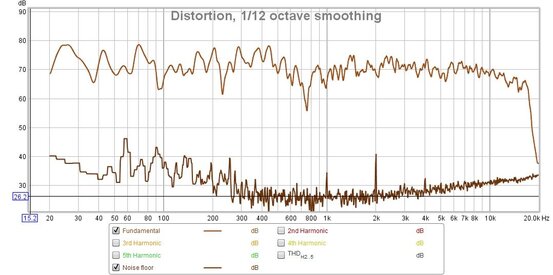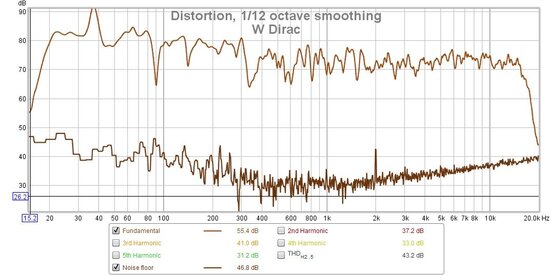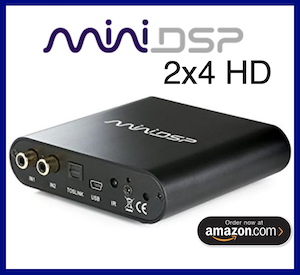Matthew J Poes
AV Addict
Thread Starter
- Joined
- Oct 18, 2017
- Posts
- 1,904
I recall John mentioning that the FFT method allowed a reduction in the noise floor from the room's actual noise floor or that of the mic. The new beta version of REW gives the noise floor, which I'm attaching. This was taken with a Dayton USB Measurement mic, which is known to have a noise floor right around 35-40db. My room is a soundproof space which measures below the noise floor of every SPL meter I've tried. A quieter mic I own has measured a noise floor at its limit of about 25db. Is the noise floor indicated in the distortion plots the rooms actual noise floor and not the processed signals noise floor (I think I may have misunderstood John on this)? Would this be the lower limit to use for CSD plots (any information below this would just be noise)? Since the mic has a known high noise floor, I assume that a quieter mic would improve this, correct? The measurement was about 73db's on average.
Anything concerning or worth interpreting in this data that may imply a noise contamination problem in the signal path? Like would the spike at 120hz just be electrical noise? The 90hz? Seems to perfectly lined up with 90hz. What about the rise at 2-3khz?

Anything concerning or worth interpreting in this data that may imply a noise contamination problem in the signal path? Like would the spike at 120hz just be electrical noise? The 90hz? Seems to perfectly lined up with 90hz. What about the rise at 2-3khz?















